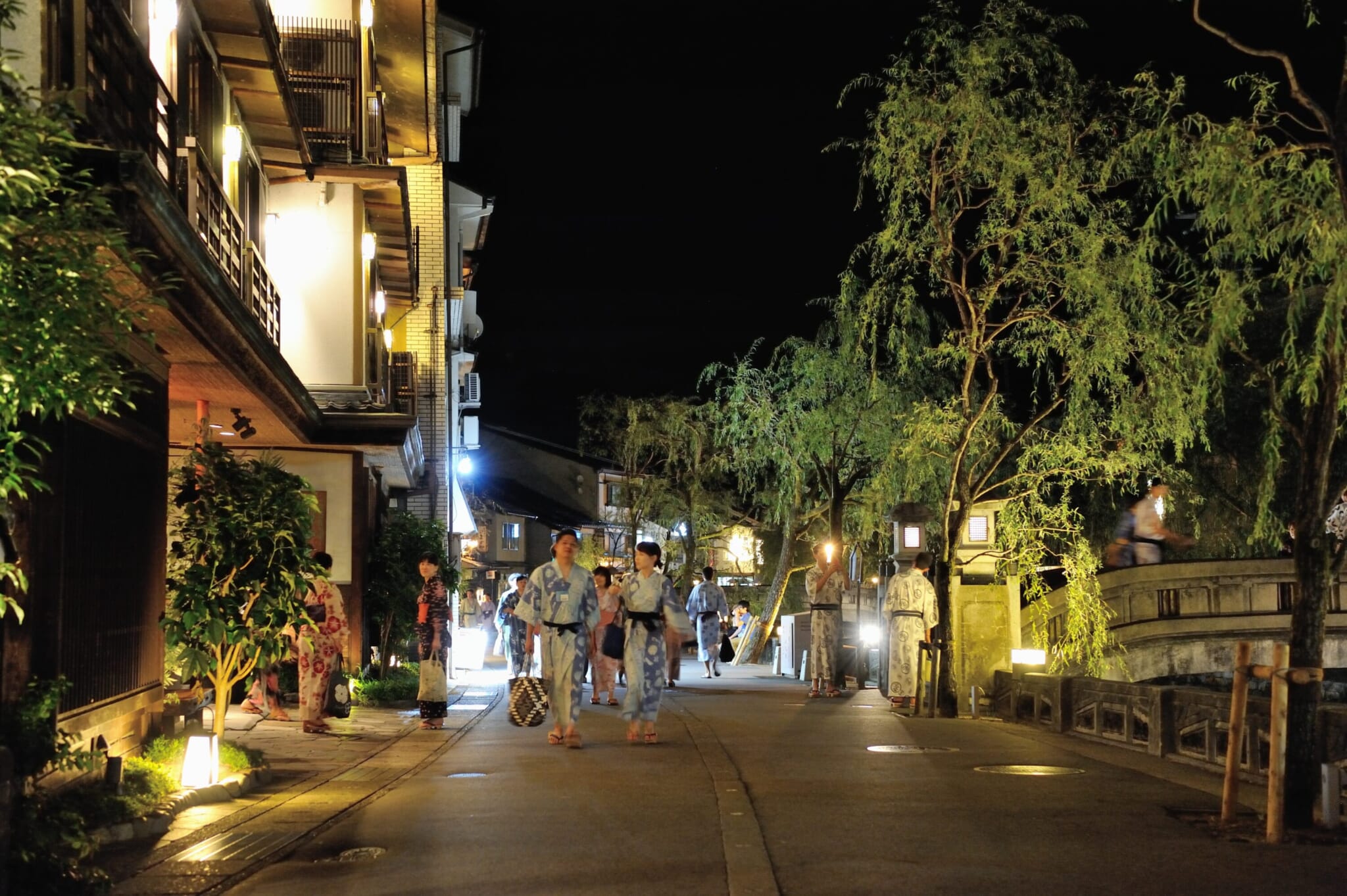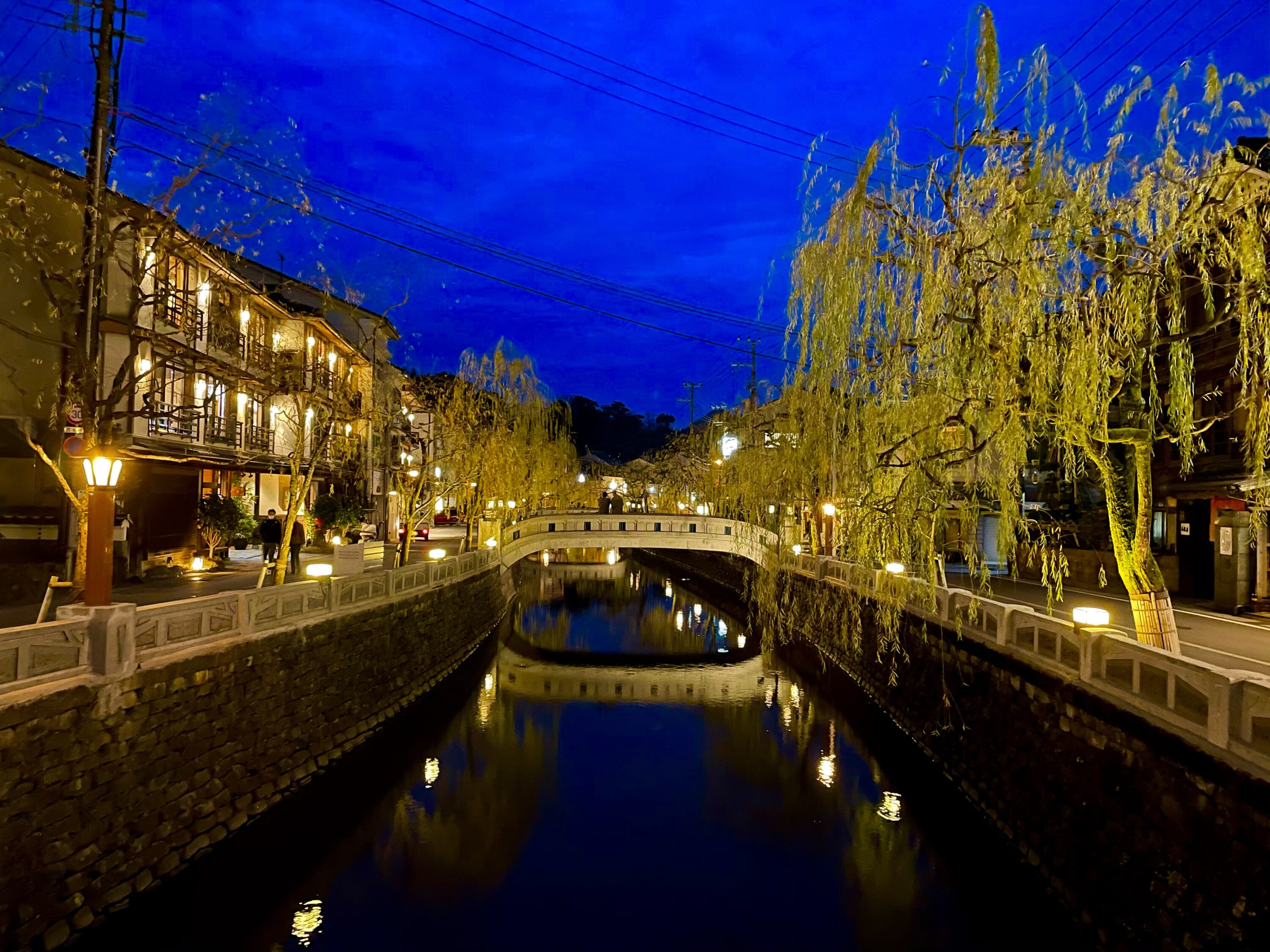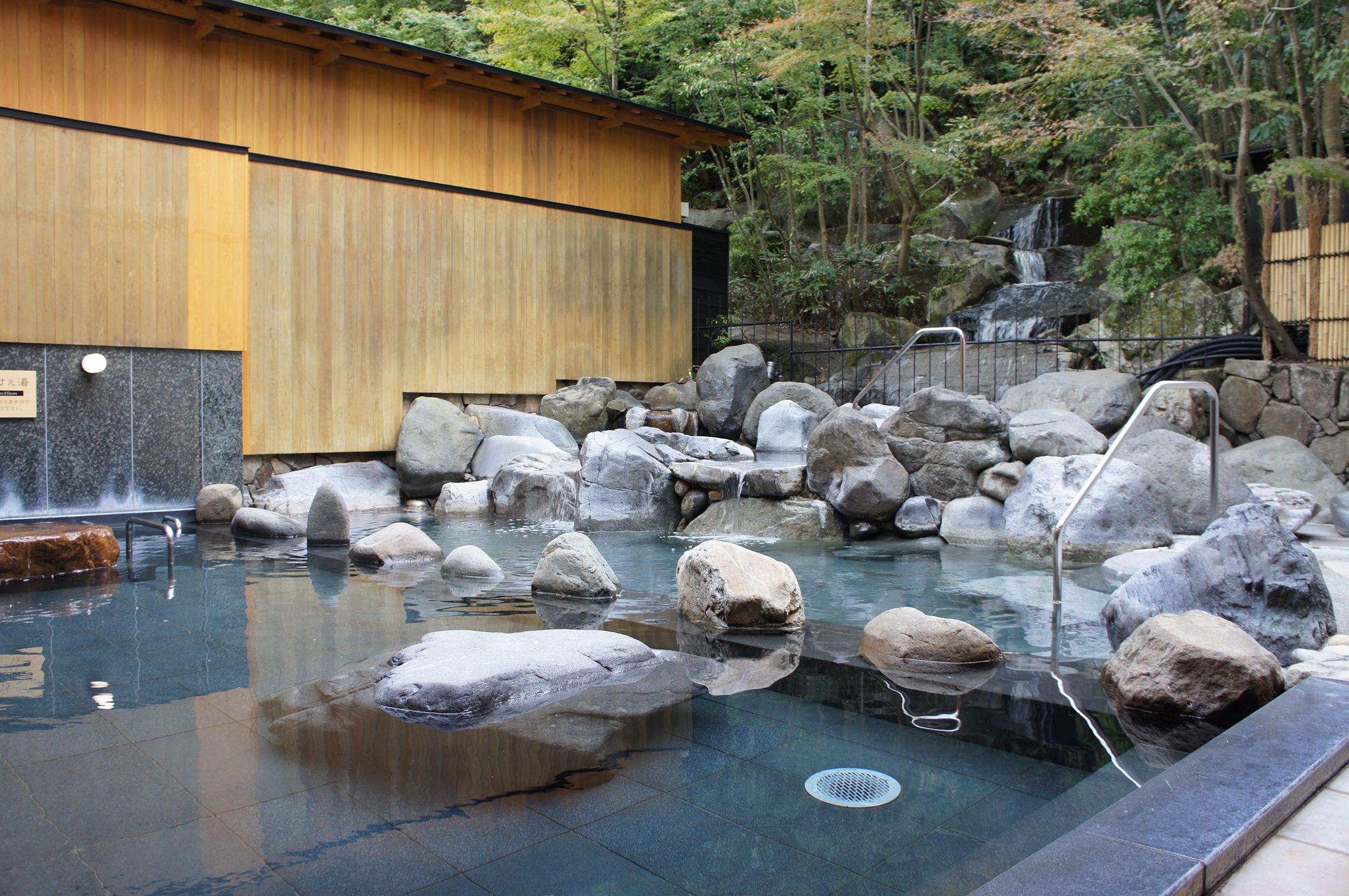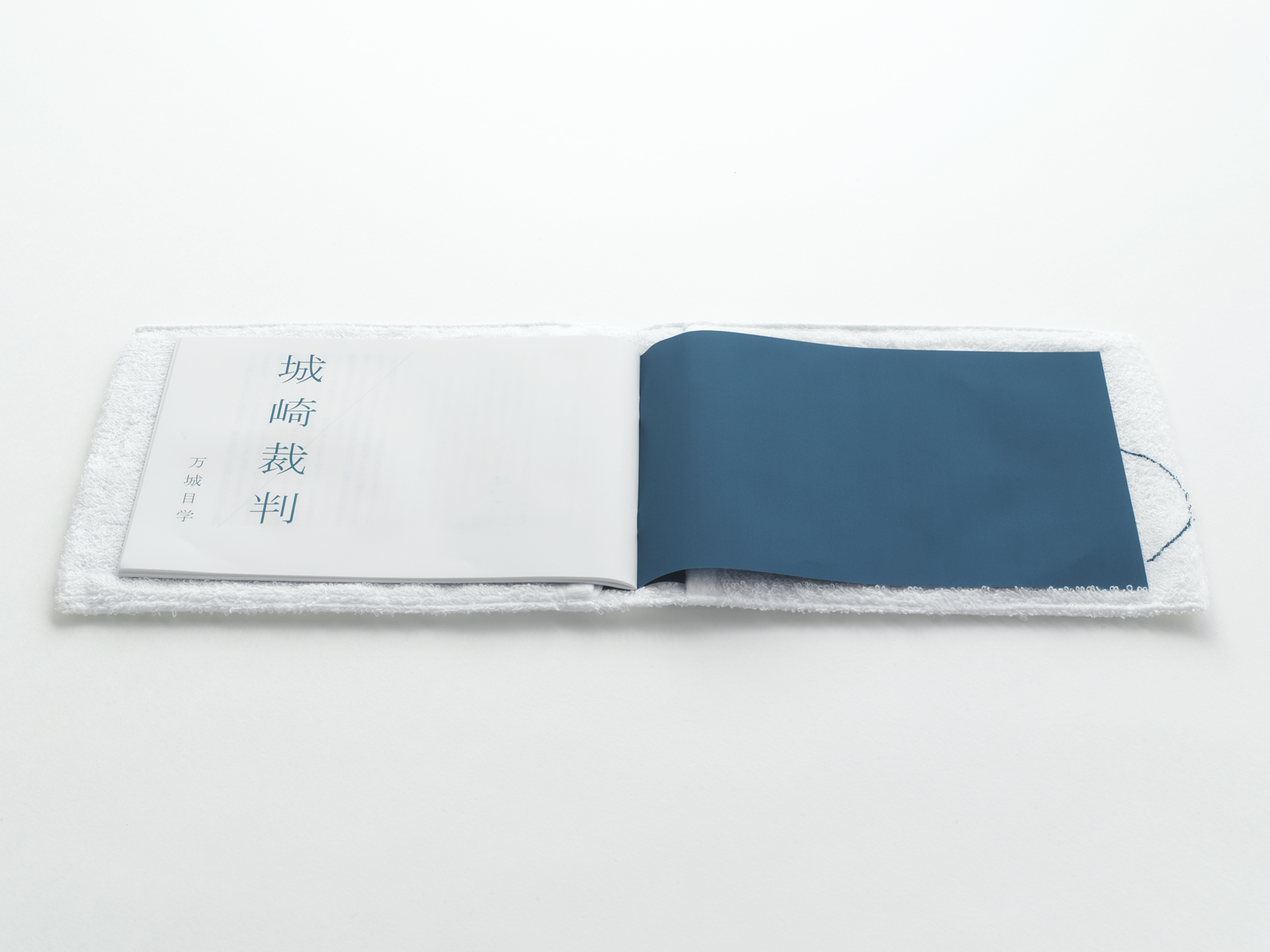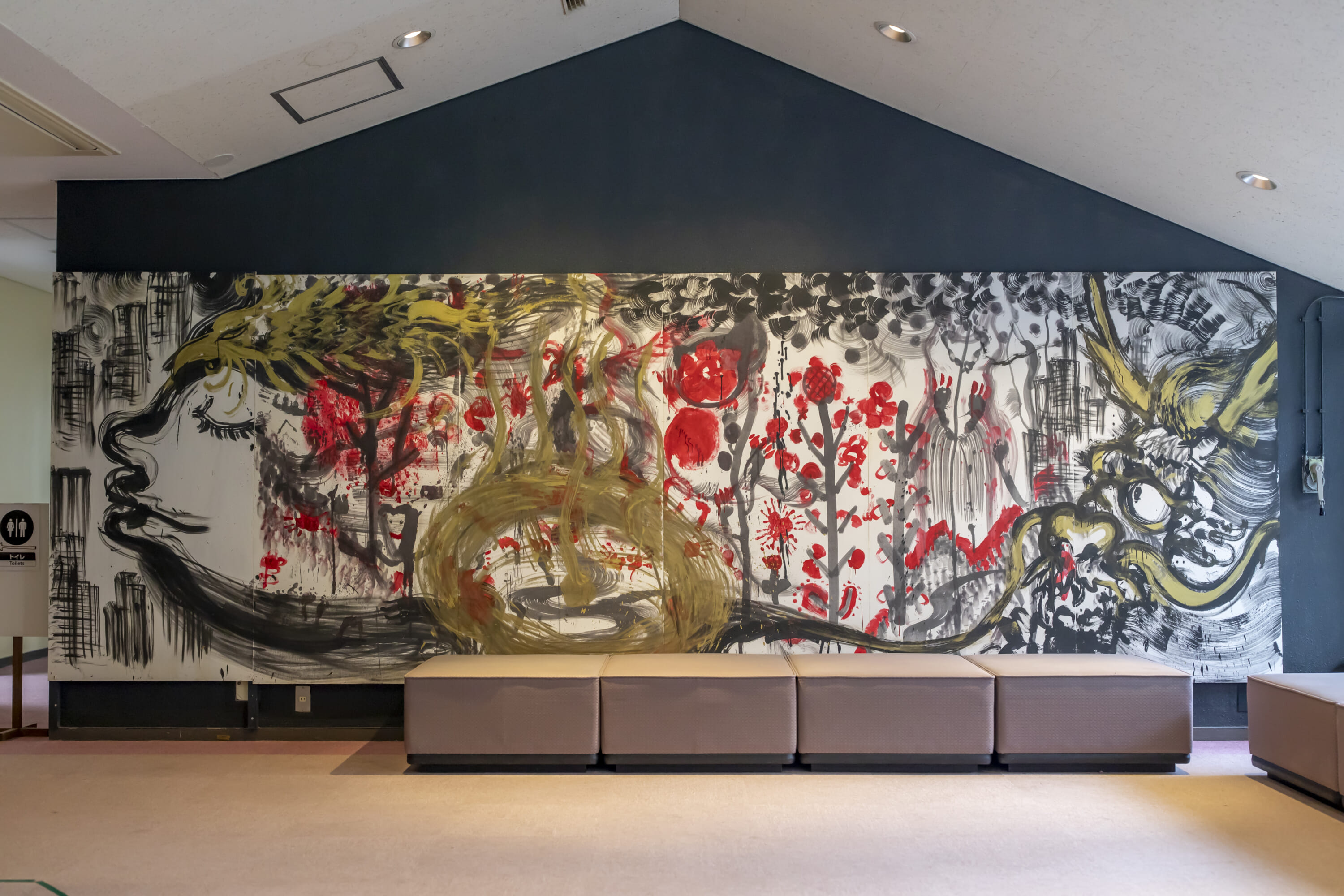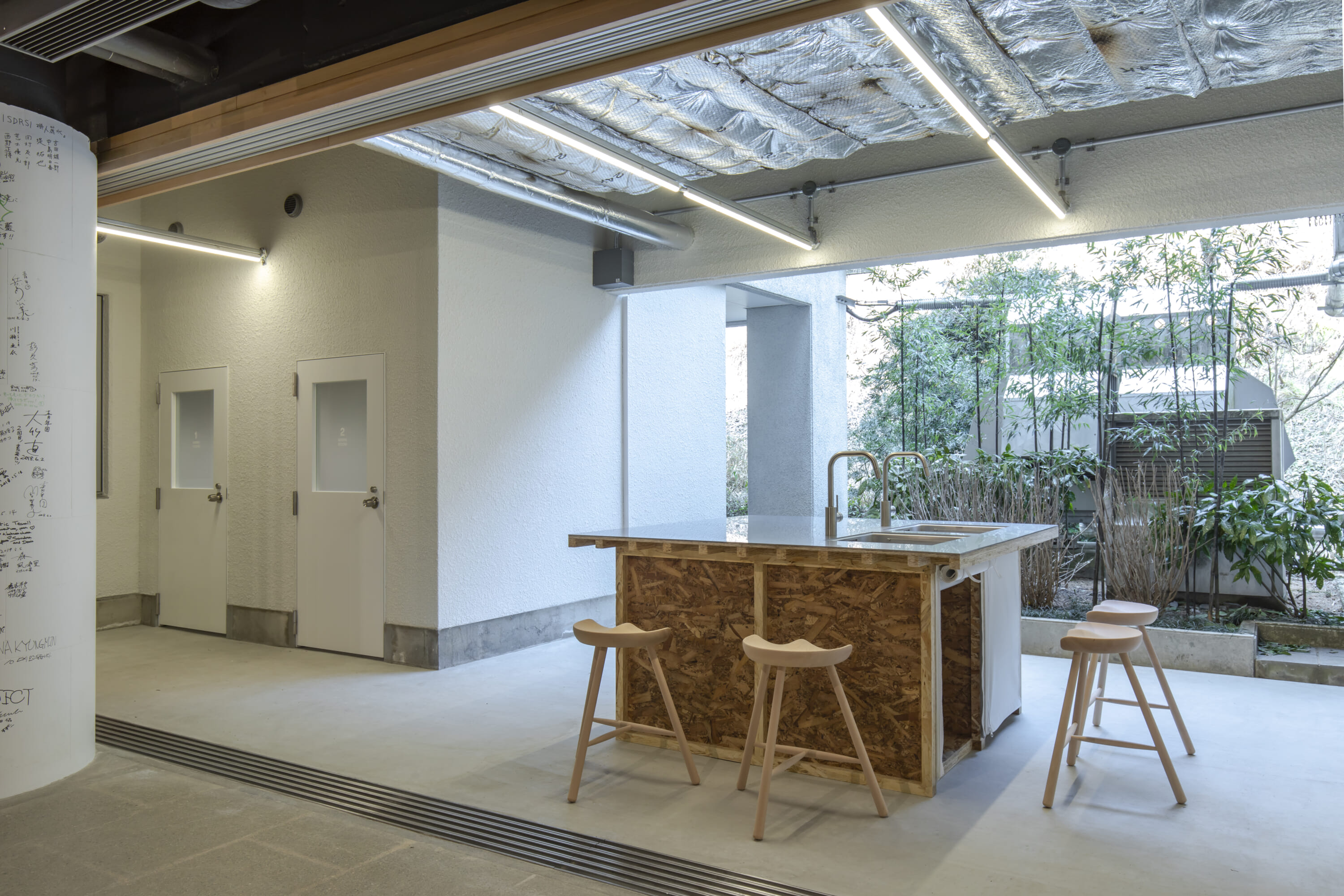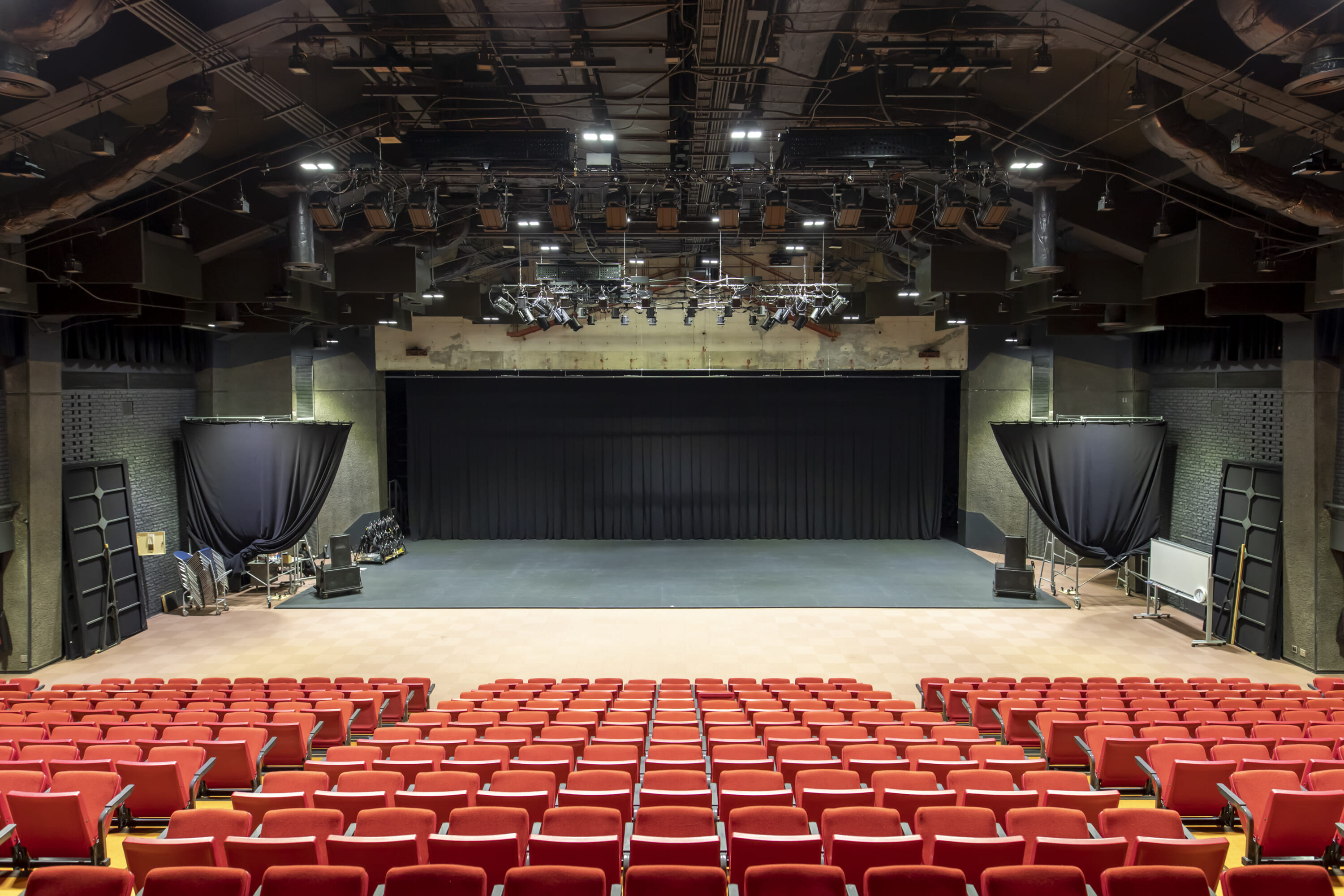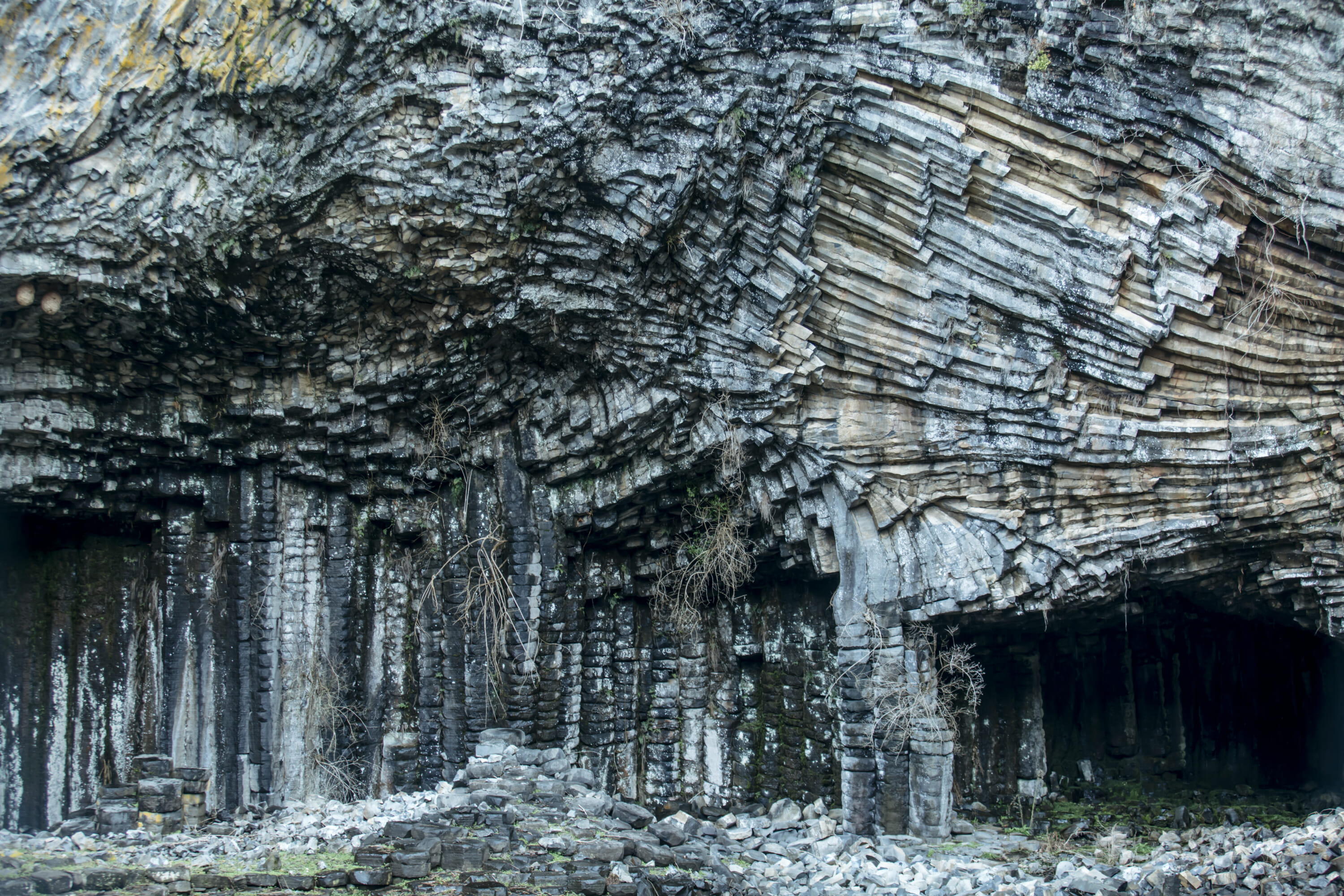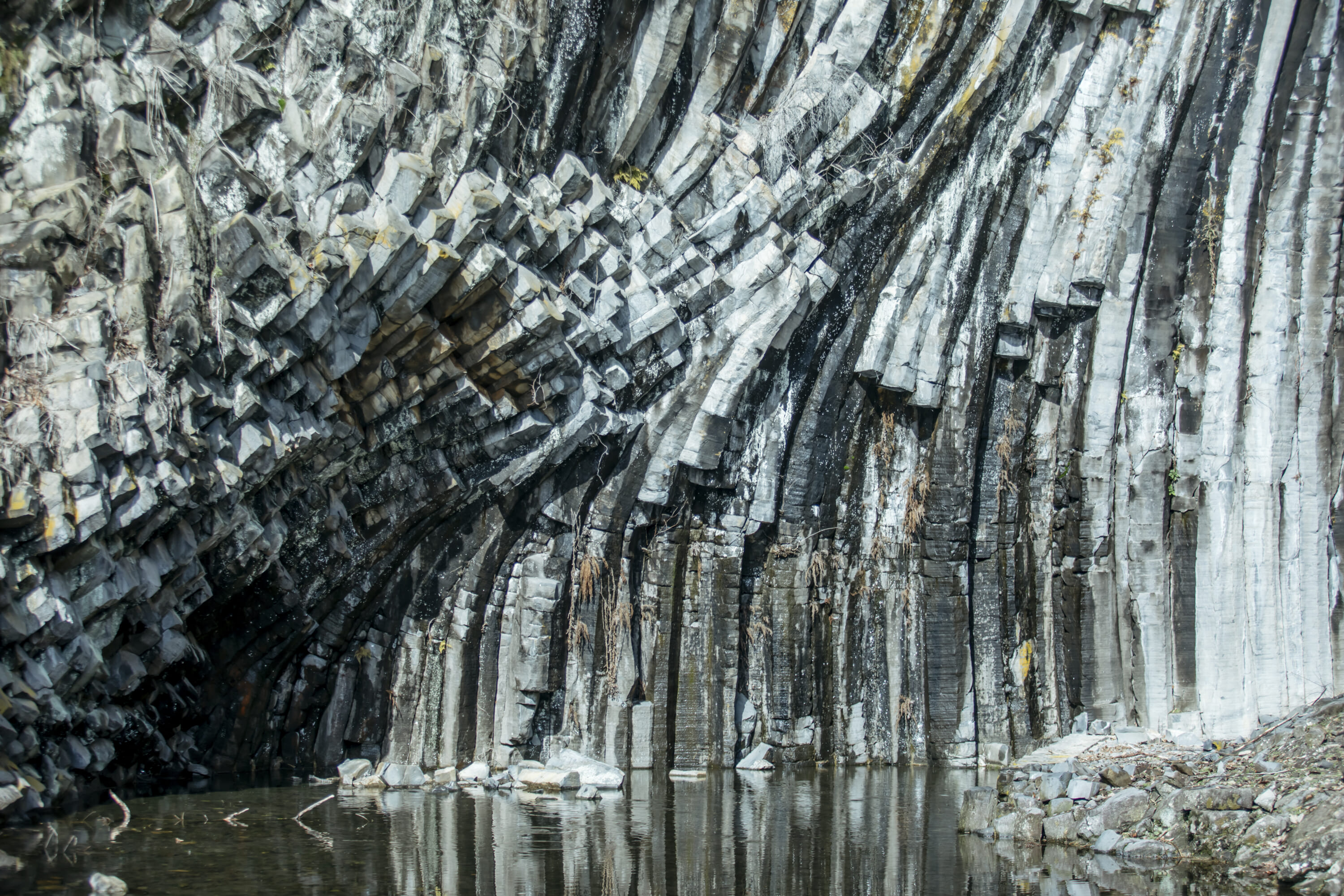Kinosaki Onsen is a beautiful natural hot springs town with 1,300 years of history and easy accessibility in the Kansai area (only a mere 2-hour-20-minute train ride from Kyoto, or a 2-hour-40-minute train ride from Osaka). It consists of seven natural public hot springs (Satono-yu, Jizou-yu, Yanagi-yu, Ichino-yu, Goshono-yu, Kouno-yu and Mandara-yu) that have always been tattoo-friendly. Unlike more famous hot spring towns such as Kusatsu or Atami, however, Kinosaki is shrouded in some degree of anonymity, unless you are a Japanese literature aficionado. The onsen town takes pride in having been the haven for writer Naoya Shiga, also nicknamed the God of Novels. In 2012, Kinosaki Onsen celebrated the 100th anniversary of Shiga’s visit, and in 2013 the Books and Onsen NPO was established to celebrate the connection between Kinosaki Onsen and literature.
Enjoy Many a Soak at Kinosaki Onsen
Kinosaki Onsen welcomes travelers as one collective inn, preserving the hot springs and scenery as shared assets of Kinosaki. The train station is the entranceway, the row of willow trees along the river is the hallway, and all seven public hot springs make up one large public bath. The souvenir shops, grocery stores and restaurants are considered the collective dining hall.
Most ryokan inns in Kinosaki Onsen have their own baths, but guests also receive a ticket that allows free access to all seven public baths in the town. They are all within walking distance and each has a different history and style, making it fun to experience and explore all seven. You can meander in style, as the inns in Kinosaki offer yukata and geta sandals to wear out and about the town.
A night walk is even more special, as the willow-lined Otani River is lit up gorgeously. The soothing clickety clackety sound of the geta echoes as visitors walk across the stone bridges and along the river.
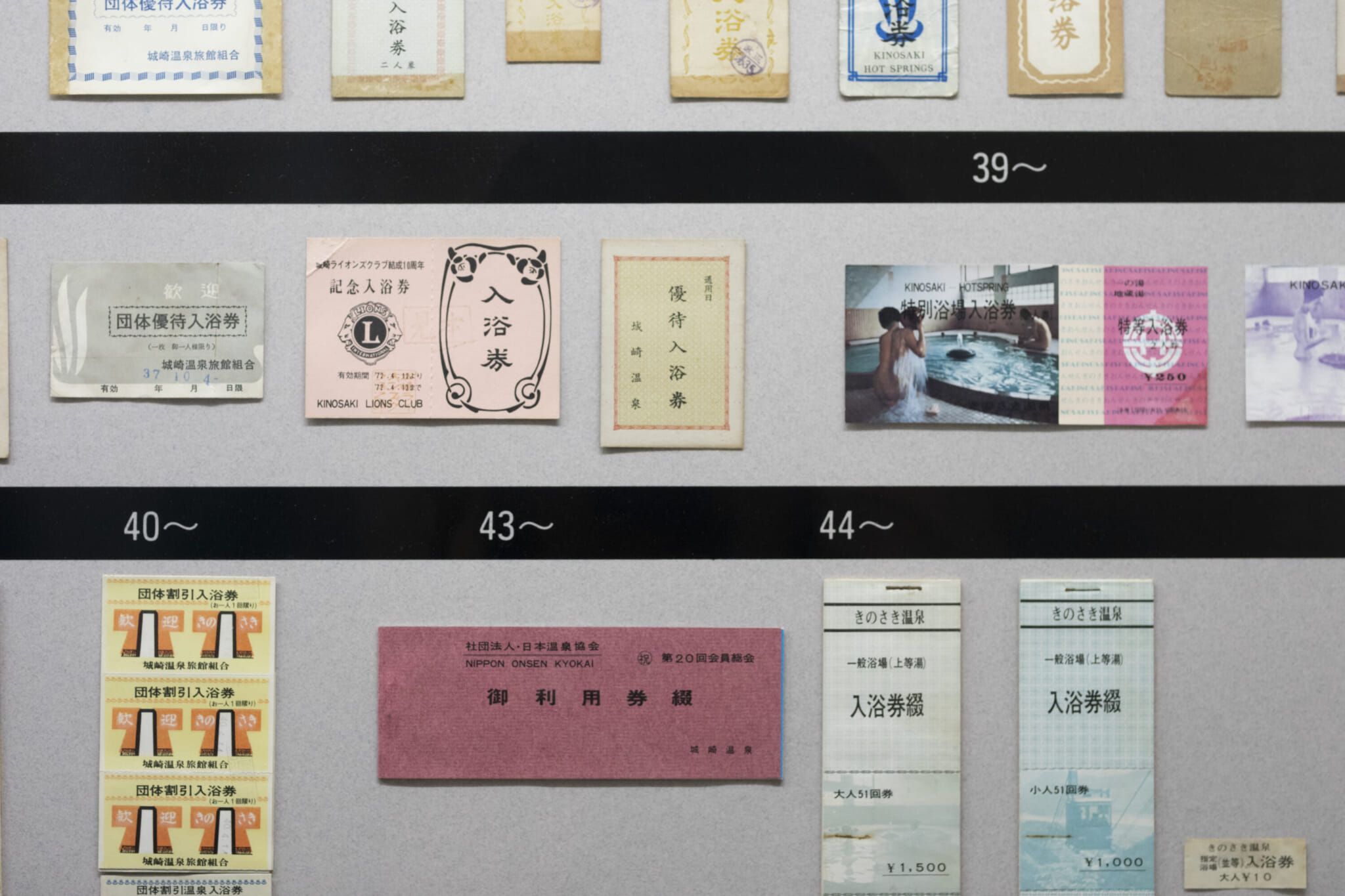
Photo by Mitsuyuki Nakajima
The Literary Lining of Kinosaki Onsen
The story of Shiga’s stay in Kinosaki Onsen starts at a low point in his life. He came to heal, as many people used to visit hot spring towns for health purposes and stay for weeks. Shiga was hit by a Yamanote Line train in Tokyo and heard from word of mouth that Kinosaki Onsen was the best onsen town and it was where the soldiers of the Russo-Japanese war went to heal their battlefield wounds. The novelist’s stay in Kinosaki Onsen led to the novel At Kinosaki, which was published in 1917.
To celebrate the 100th anniversary of Shiga’s visit to Kinosaki Onsen, the Books and Onsen NPO was established in collaboration with the young innkeepers in Kinosaki. The NPO publishes cleverly designed books that are sold exclusively in Kinosaki Onsen. Dreaming bigger for its 10th year anniversary, Books and Onsen is planning to publish an English translation of At Kinosaki with photographs by Rinko Kawauchi. With this version, travelers can not only read the story, but also experience Shiga’s philosophy on a deeper level through a visual medium as well.
Explore Kinosaki Area
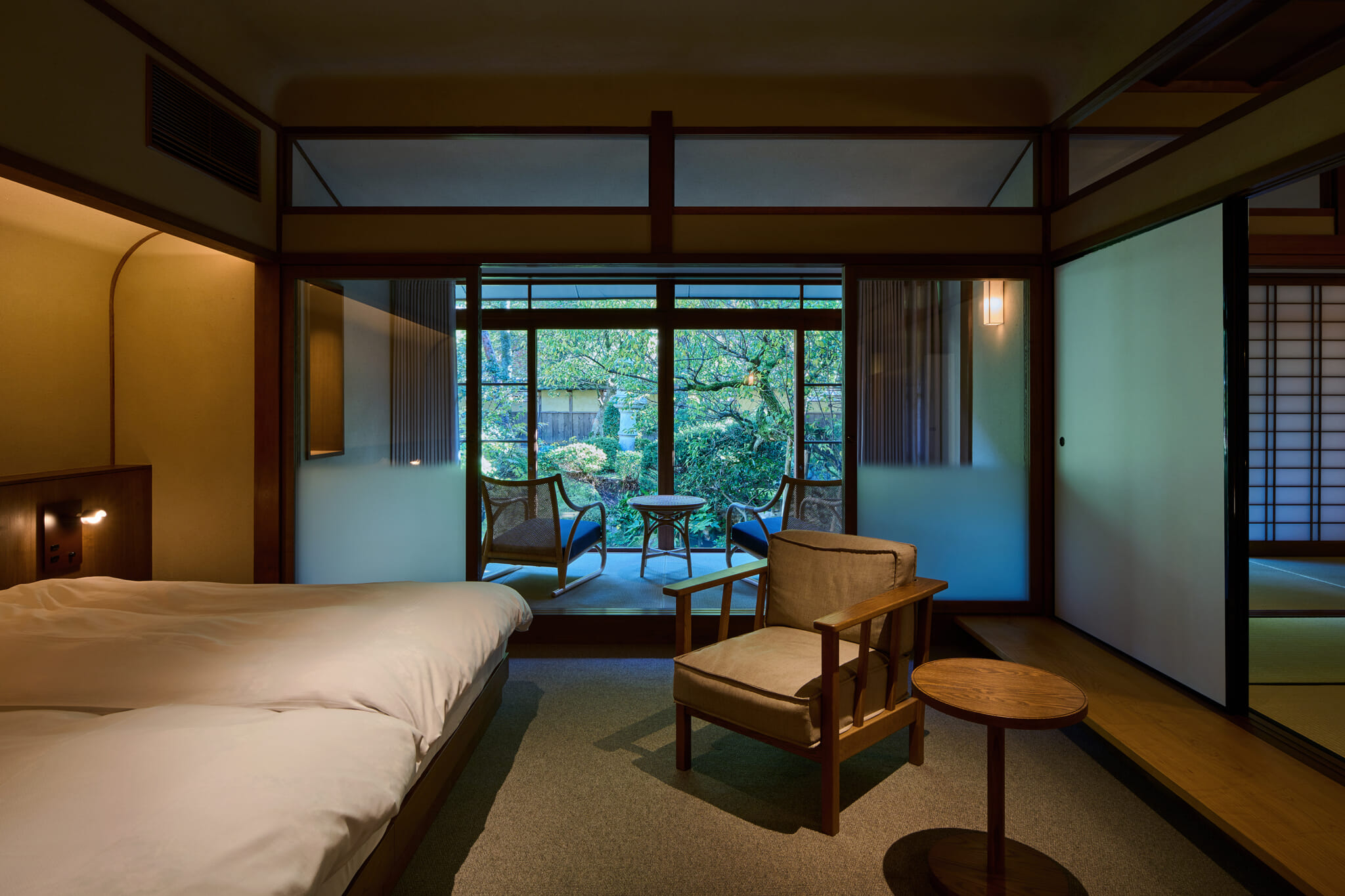
Mikiya
Established 300 years ago, Mikiya is one of Kinosaki Onsen’s oldest ryokans and was Shiga’s favorite ryokan in Kinosaki Onsen. The writer enjoyed his stay so much that he described his favorite room in great detail in At Kinosaki. That room no longer exists, but guests can take a look at Room 26 in Mikiya where Shiga stayed in later years. Mikiya is full of Japanese retro charm with a modern twist in its wooden architecture, traditional Japanese garden and more. With a cozy library, it’s understandable if you would want to stay longer with your nose buried in a book.
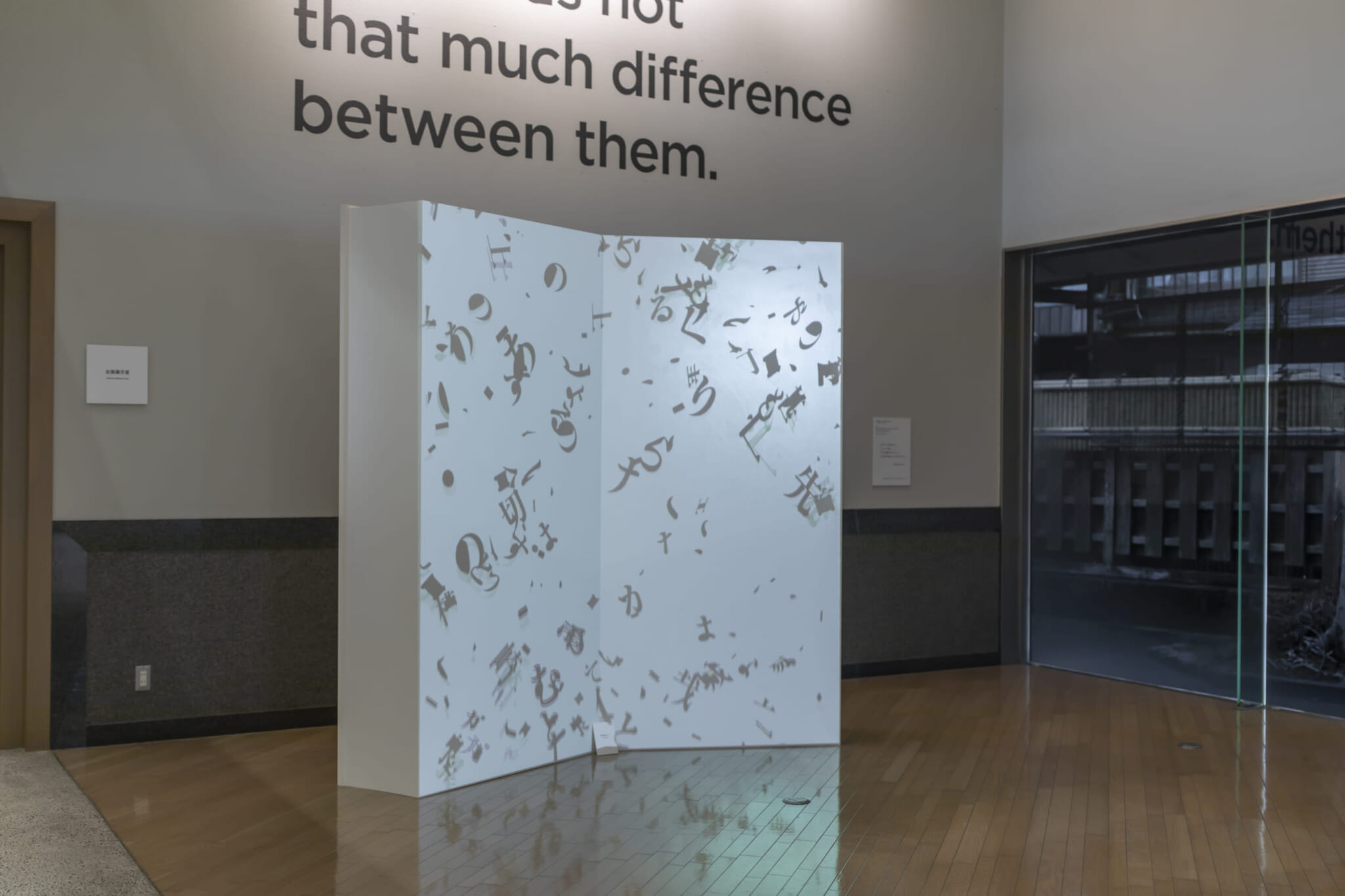
Photo by Mitsuyuki Nakajima
Kinosaki Literature Museum
The connection between literature and Kinosaki Onsen is commemorated in the Kinosaki Literature Museum that opened in 1996. Located in the center of Kinosaki Onsen, the museum of course celebrates the works of Shiga, as well as Shirakaba-ha writers, an influential literary inner circle of writers that played an important role in modern Japanese literature. Alongside literature, the museum exhibits various art and cultural pieces of Kinosaki Onsen and its history.
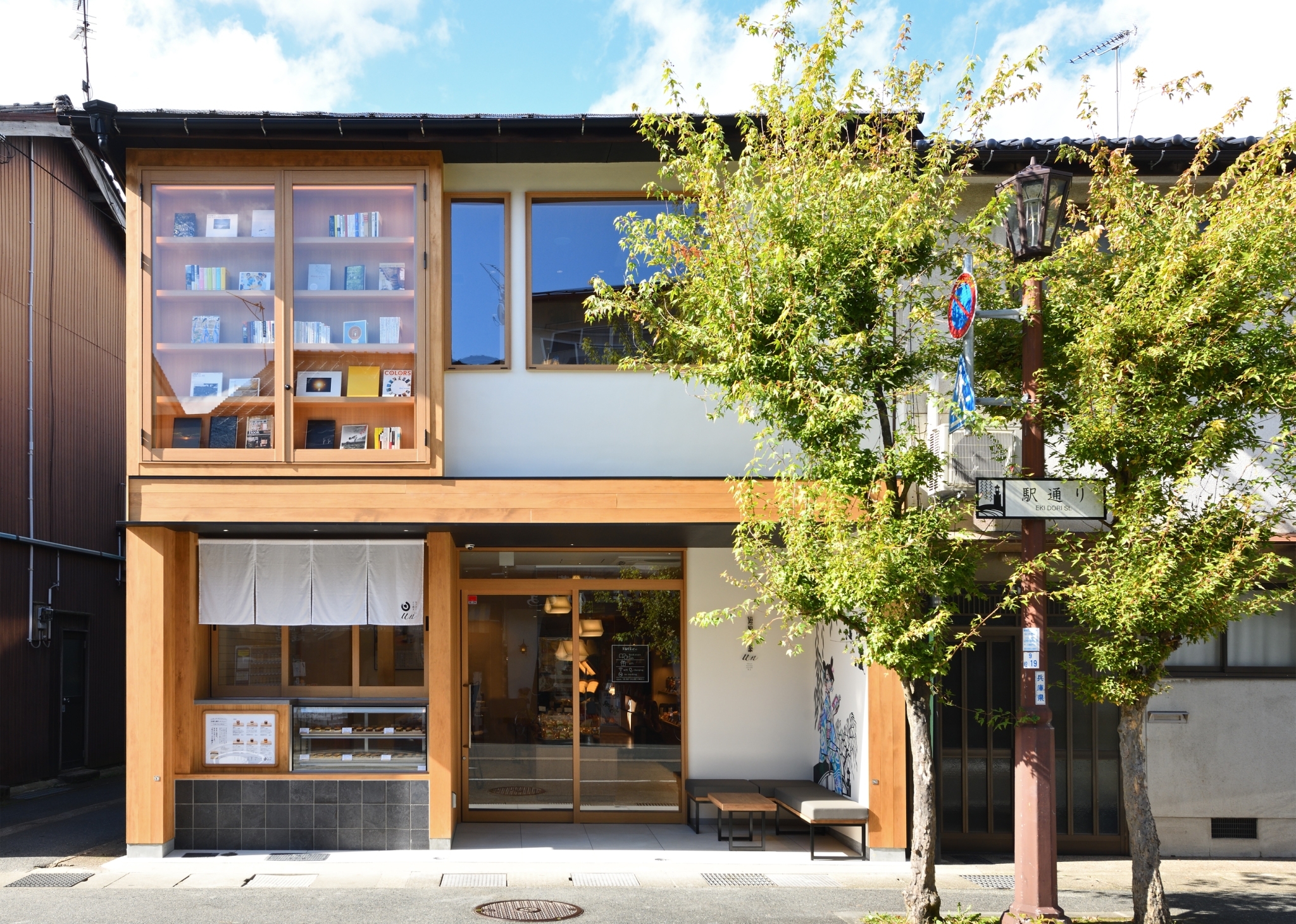
Tanpennkissa Un (Book Café Un)
Perfect for a short break, after your adventures around Kinosaki Onsen, whether you are a bookworm or not, everyone will fall in love with Tanpenkissa Un. Tanpenkissa Un boasts a wide range of literature from short Japanese novels, foreign literature, poetry, short plays closely related to Kinosaki International Arts Center, picture books, children’s stories, manga, and much more. Make sure to try their freshly made butter dorayaki, an irresistible Japanese sweet with cream or red bean paste sandwiched between two pancakes.
Kinosaki International Arts Center
Kinosaki International Arts Center is an artist-in-residence hub and an art center with a state-of-the-art stage and auditorium, six studios, shared kitchen and residential housing that can accommodate up to 22 people. The center opens applications for their Artist in Residence program throughout the year for artists and companies. It also brings together the local community with its unique workshops, presentations and live performances.
Genbudo Park
Venture a bit further to see Genbudo Park, a marvel of nature that consists of five breathtaking basalt caves. The Genbudo Caves have a geological history of about 1.6 million years, and the basalt rocks were traditionally used as river dikes for the river in Kinosaki Onsen. In 1931, Genbudo Park was designated a National Natural Monument by the Japanese Government, and the impressive caves are also part of the San’in Kaigan UNESCO Global Geopark. During special occasions, the caves are lit up at night, casting a mesmerizing scene to gaze upon, even hosting live performances for the public.
Check the official website of Kinosaki Onsen and plan your next travel chapter to this hot spring town.
Updated On November 30, 2023

